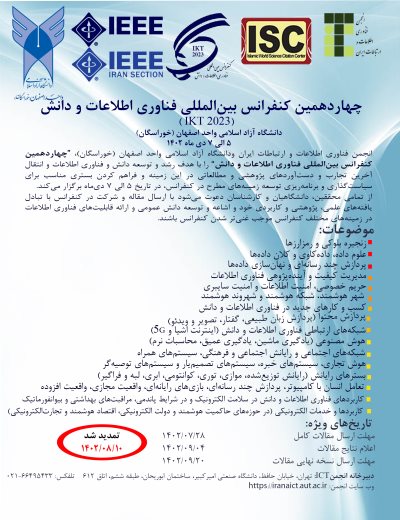0% Complete

نویسندگان :
کلمات کلیدی :
چکیده :
لیست مقالات بایگانی شده
مهدی علیرضانژاد - عمار عبیس حسین المعموری
سعیده کبیری راد
فاطمه مکی زاده - سارا صراف - مصطفی شیرالی
میترا اکبری کهنه شهری - دکتر رضا محمدی - دکتر محمد نصیری میترا اکبری کهنه شهری - رضا محمدی - محمد نصیری -
Hossein Sekhavaty-Moghadam - Marzieh Hosseinkhani - Dr Azadeh Mansouri
فریبا اسلامی امیرآبادی - کمال میرزایی بدرآبادی
Fatemeh Hassanvand - Dr Faria Nassiri-Mofakham
Ghazaleh Shahin - Dr Bahman Zamani
زهرا عمیقی - مرتضی یوسف صنعتی - میرحسین دزفولیان




